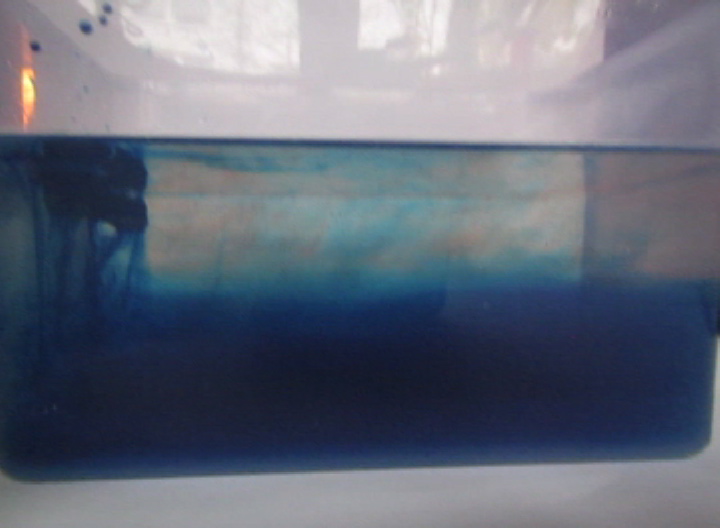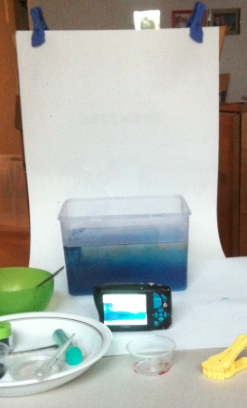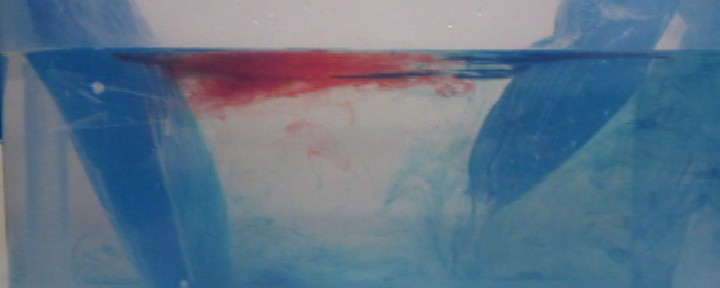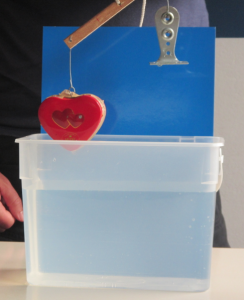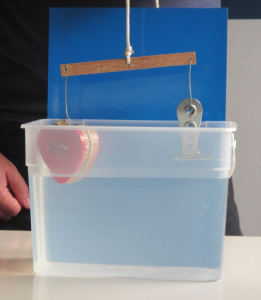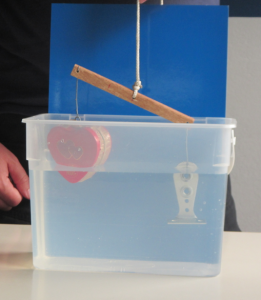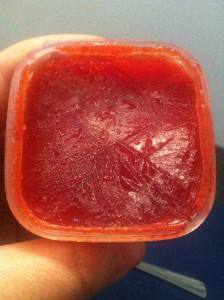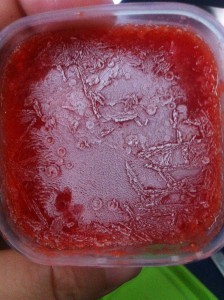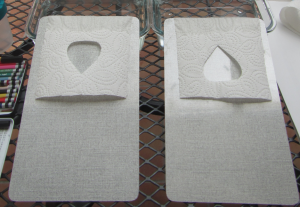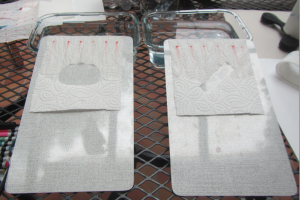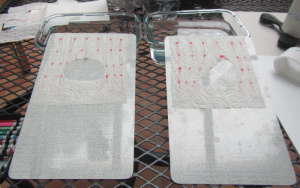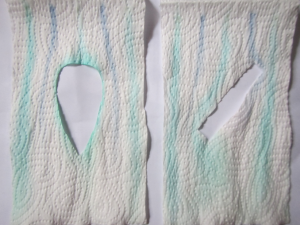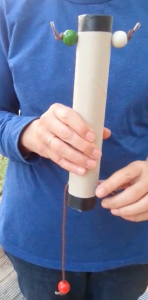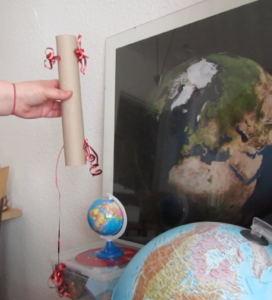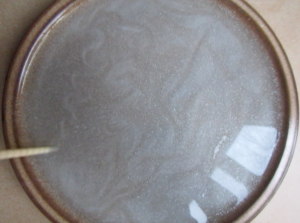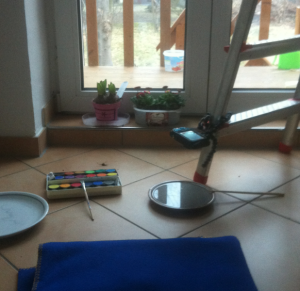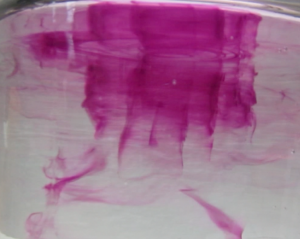Different methods to project the sun to watch it safely.
During our recent PBL workshop, we came up with a number of different ways to watch a solar eclipse by projecting the sun’s image on a screen, using “household items” (which was the task we had set). Many different methods are shown here:
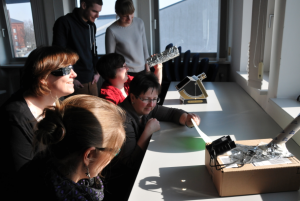
Watching the solar eclipse on March 20th, 2015. Photo by Alina Gruhn (thanks! :-))
Below are descriptions of the different projectors, starting with the easiest and becoming more and more difficult as you read along.
The pin-hole cardboard projector
The easiest way to watch a solar eclipse anyone can imagine is the green card you see in the picture above: It’s just a piece of cardboard with a hole in the middle. The result might not be the most exciting of all, but in the picture below you see the small projection at the bottom right corner with a small bit bitten out of it. Not too bad for a no-tech version of a projector!
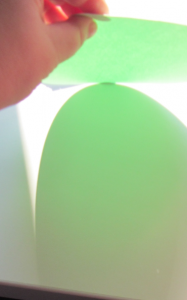
“Solar projector”. Cardboard with a pin hole in the middle. See the projected image of the sun in the bottom right corner of the picture?
Next time one might want to use darker cardboard. But since this was just a proof of concept, I was happy enough with it.
The chips tube projector
Participant F brought a cardboard chips tube which she cut in half, added sandwich paper in the middle, made a tiny hole in the bottom of the can and voila: projector.
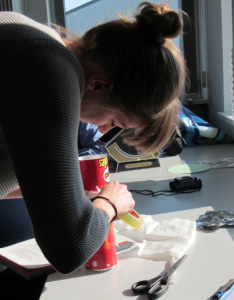
Creating the chips tube projector
While she was disappointed by the size of the image, I thought it was pretty cool:
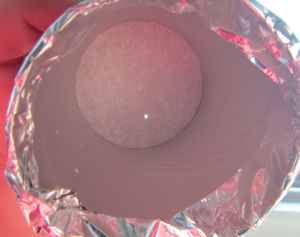
Projection of the solar eclipse in the chips can projector. See how the left part of the sun is missing?
The binocular projector
One projector that was amazingly easy to set up (provided you have binoculars handy) and that gave pretty impressive results is shown here:

Projection of the solar eclipse using binoculars.
So easy, yet so effective!
Anna’s special projector
This is a project that had great potential, only we gave up on adjusting everything properly because all the other projectors were set up already and it was too exciting to watch the solar eclipse.
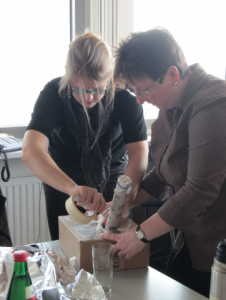
Anna and Siska building a projector
I think here the sun was projected on a screen inside the box, which you could look at through a tube. And the other tube is covered on top except for a tiny hole.
The solar projector
I know it is cheating a bit, but I decided to have the solar projector I talked about last week count as a “household item”. And it is, because I had it at home before we wrote the solar eclipse PBL case!
The projections with the real projector were super impressive:
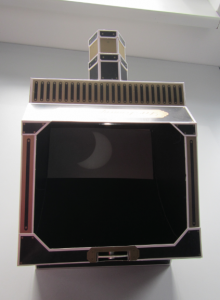
Projection of the solar eclipse in a real projector
In fact, we could even watch solar spots on the sun. I will definitely bring out this projector again long before the next solar eclipse!
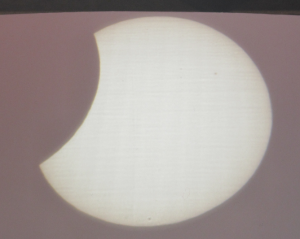
Projection of the solar eclipse. Can you spot the sun spots?
And one extra:
The box-projector
This one we didn’t try out ourselves (even though I had brought all the materials, but as I said above, we got so caught up observing that we didn’t pursue all the different options), so the pictures are from my mom’s school where my mom and my dad (and 20 something kids, I suspect*) had to play, too. See the tripod for scale – this projector is a lot bigger than anything we built at my work!
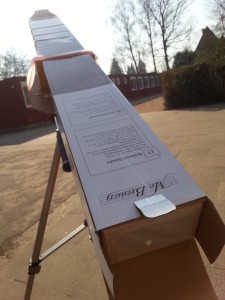 And their projections look pretty impressive, too:
And their projections look pretty impressive, too:
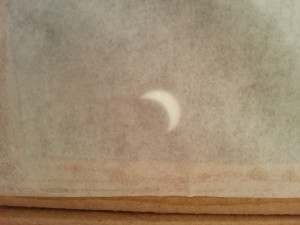
Projection of the solar eclipse
By the time the sun was covered that much, the sky was completely overcast at my work. But it looks like the kids got to see a pretty impressive solar eclipse!
—
*because, funnily enough, lots of classes weren’t allowed to watch the solar eclipse but had to sit inside with the curtains closed. Because on this one day the sun was clearly so much more dangerous than on any other given day, especially when watching only a projection of it (and there are tons of methods to do that as you might have noticed from the post above…). Always amazing how stupid some people are…
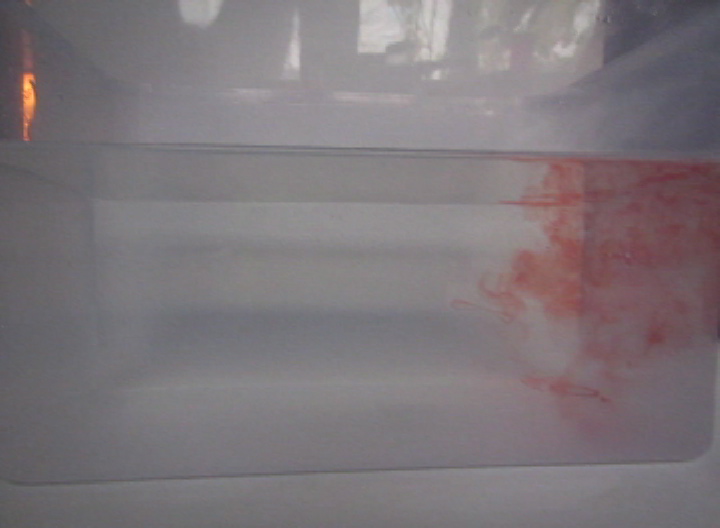 Now. Ice cubes on the “cold” end. For convenience, they have been dyed blue so that the cold melt water is easily identifiable as cold.
Now. Ice cubes on the “cold” end. For convenience, they have been dyed blue so that the cold melt water is easily identifiable as cold.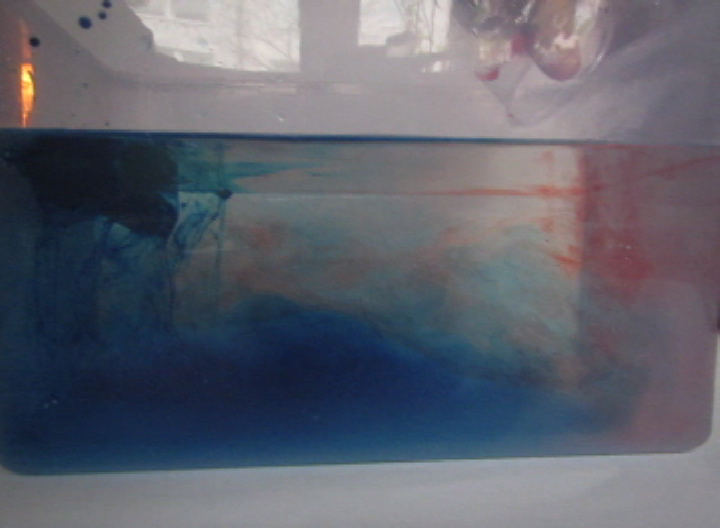 A very easy way to get a nice stratification! And as you see in the video below, awesome internal waves on the interface, too.
A very easy way to get a nice stratification! And as you see in the video below, awesome internal waves on the interface, too.